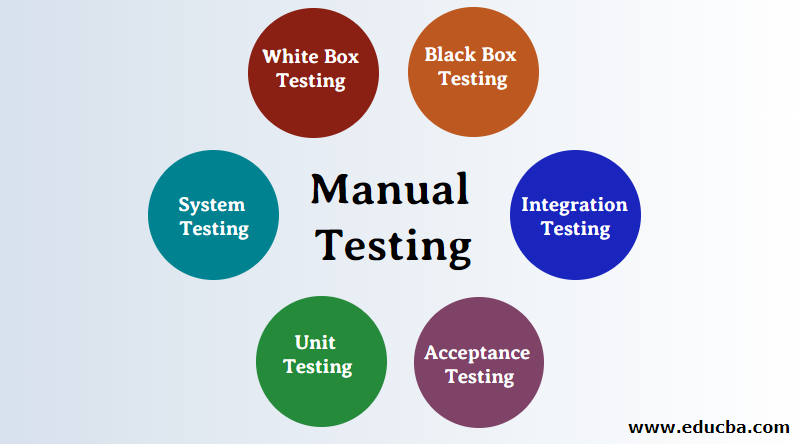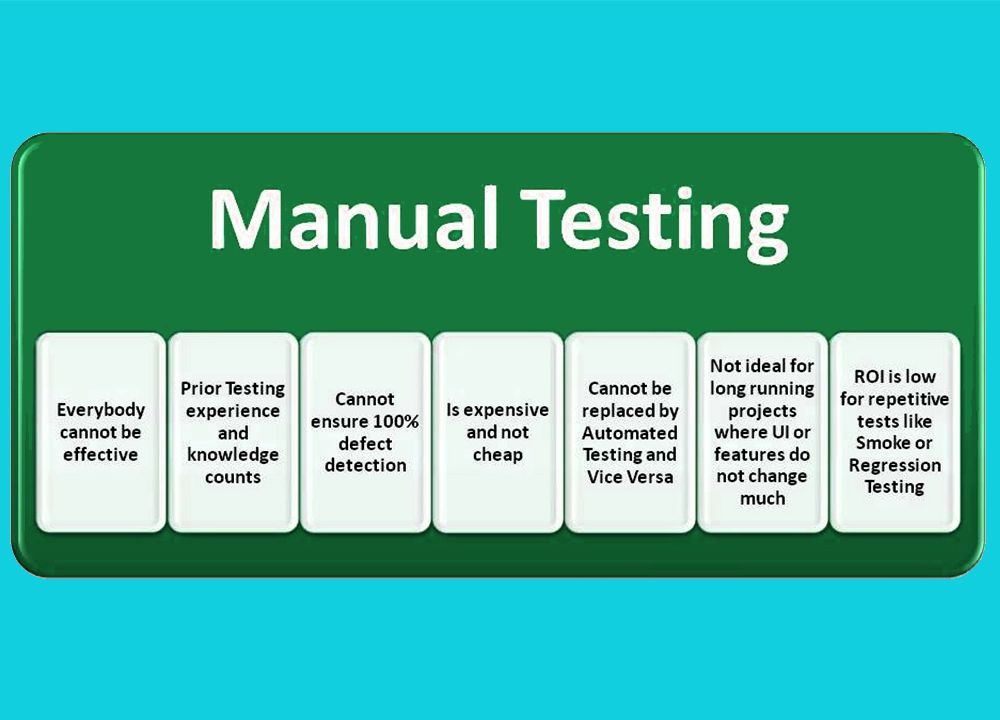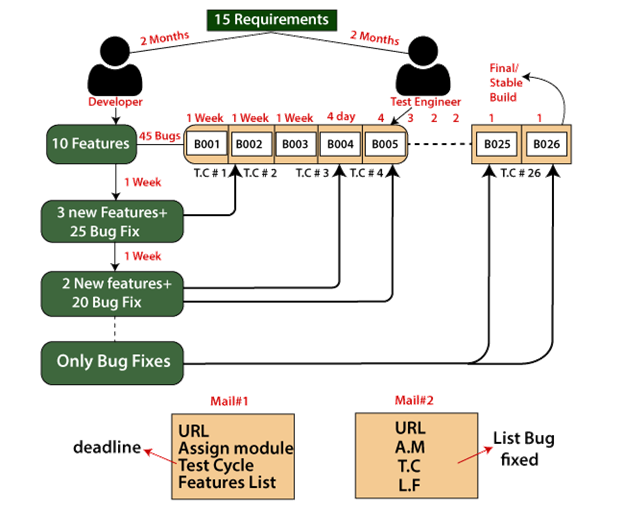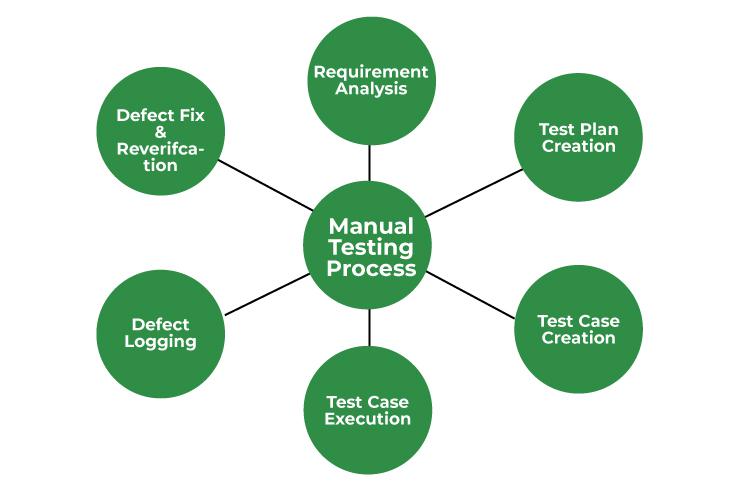
Hey all,
Today, I am gonna let you know the basic concept of Manual Testing.
What is Manual Testing?

Manual testing is a fundamental process in software development where human testers meticulously examine software applications without the aid of automated testing tools. In this method, testers perform various test cases, interacting with the application’s user interface to identify bugs, defects, or unexpected behavior.
In manual testing, testers design detailed test cases based on software requirements and functional specifications. These test cases outline specific steps, input data, and expected outcomes. Testers then execute these test cases manually, observing the software’s responses and validating its behavior.
When discrepancies between expected and actual results arise, testers identify defects within the application. They meticulously document these issues, providing detailed information on how to reproduce the problem and the context in which it occurred.
Additionally, manual testers conduct regression testing by re-running test cases to ensure that fixes for identified defects do not introduce new issues. Exploratory testing, where testers explore the application without predefined test cases, is also employed to uncover usability problems and corner-case defects.
Manual testing is essential for scenarios requiring human judgment, intuition, and creativity. It is especially valuable in the early stages of software development when user interfaces and functionalities are rapidly evolving.
While manual testing offers a deep understanding of user interactions and subtle issues, it can be time-consuming and may not be suitable for large-scale or repetitive testing efforts. Often, automated testing complements manual testing, particularly in regression testing and scenarios requiring frequent assessments.
Definition of Manual Testing

Manual testing is a type of software testing in which a human tester executes test cases manually without the use of any automated tools. The goal of manual testing is to identify bugs, defects, and usability issues in a software application.
Manual testers play the role of an end user and test the software from the user’s perspective. They interact with the software application and verify its functionality, performance, usability, and security. Manual testers also use various testing techniques, such as functional testing, usability testing, and security testing, to identify bugs and defects.
Benefits of manual testing:
- It can be used to test all aspects of a software application, including its functionality, performance, usability, and security.
- It is flexible and can be adapted to test any type of software application, regardless of its complexity.
- It is relatively inexpensive to implement and does not require any specialized tools or skills.
- It can be used to identify bugs and defects that are difficult or impossible to detect using automation.
Drawbacks of manual testing:
- It is time-consuming and labor-intensive, especially for large and complex software applications.
- It is prone to human error, as testers may miss bugs or defects.
- It can be difficult to achieve 100% test coverage using manual testing alone.
When to use manual testing:
- Manual testing is best suited for testing complex and dynamic software applications, where automation is not feasible or practical.
- It is also useful for testing the usability and security of software applications.
Examples of manual testing tasks:
- Testing the functionality of a software application by executing test cases designed to verify the expected behavior of the application.
- Testing the performance of a software application by measuring its response time and throughput under different conditions.
- Testing the usability of a software application by evaluating its ease of use and navigation.
- Testing the security of a software application by identifying and exploiting vulnerabilities.
Overall, manual testing is an important part of the software development lifecycle and can be used to ensure the quality of software applications. However, it is important to note that manual testing is not a replacement for automation testing, and both types of testing should be used in conjunction with each other to achieve the best results.
Let’s Understanding the Basics of Manual Testing.

Manual testing is a type of software testing where a human tester executes test cases manually without the use of any automated tools. The goal of manual testing is to identify bugs, defects, and usability issues in a software application.
Why is manual testing important?
Manual testing is important because it can be used to test all aspects of a software application, including its functionality, performance, usability, and security. It is also flexible and can be used to test any type of software application, regardless of its complexity.
When to use manual testing?
Manual testing is best suited for testing complex and dynamic software applications, where automation is not feasible or practical. It is also useful for testing the usability and security of software applications.
Here are some examples of manual testing tasks:
- Testing the functionality of a software application by executing test cases designed to verify the expected behavior of the application.
- Testing the performance of a software application by measuring its response time and throughput under different conditions.
- Testing the usability of a software application by evaluating its ease of use and navigation.
- Testing the security of a software application by identifying and exploiting vulnerabilities.
Tips for effective manual testing:
- Use a variety of testing techniques, such as functional testing, usability testing, and security testing, to identify bugs and defects.
- Be thorough and execute the test cases carefully.
- Use a test management tool to organize and track your test cases.
- Report any bugs or defects that you find to the development team promptly.
- Retest all fixed bugs to ensure that they have been fixed correctly.
Challenges in Manual Testing:
- Time-Intensive: Manual testing can be time-consuming, especially for extensive or intricate applications.
- Potential for Human Errors: Testers might inadvertently make mistakes during test case design or execution.
- Coverage Limitations: Due to time constraints, manual testing might not cover all possible scenarios comprehensively.
Conclusion
Manual testing is an important part of the software development lifecycle and can be used to ensure the quality of software applications. However, it is important to note that manual testing is not a replacement for automation testing, and both types of testing should be used in conjunction with each other to achieve the best results.






Leave a Reply
You must be logged in to post a comment.